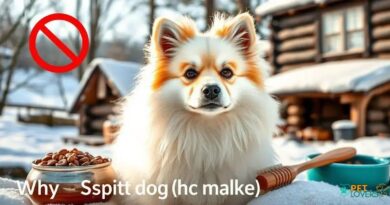What is Whisk
What is Whisk?
Whisk is a term that often refers to a tool used in cooking, but in the context of pet care, it can also relate to the unique sensory features of dogs. Whiskers, or vibrissae, are specialized hairs that serve a crucial role in a dog’s sensory perception. These long, stiff hairs are deeply embedded in the dog’s skin and are highly sensitive to touch, allowing dogs to detect changes in their environment.
The Function of Whiskers in Dogs
Whiskers are not just for show; they play a vital role in a dog’s ability to navigate their surroundings. These sensory hairs can pick up on minute changes in air currents, helping dogs gauge the size of openings and obstacles. This is particularly useful in low-light conditions, where a dog’s vision may be limited. Whiskers essentially act as a radar system, providing dogs with essential information about their environment.
How Whiskers Affect a Dog’s Behavior
The presence and sensitivity of whiskers can significantly influence a dog’s behavior. For instance, a dog may become more cautious when navigating tight spaces or unfamiliar environments. The information gathered through their whiskers can trigger instinctual responses, such as backing away from potential threats or exploring new areas with curiosity. Understanding this behavior can help dog owners create a safer and more enriching environment for their pets.
Whiskers and Communication
Whiskers also play a role in canine communication. Dogs use their whiskers to express emotions and intentions. For example, when a dog is excited or curious, their whiskers may be more erect, indicating alertness. Conversely, if a dog feels threatened or scared, their whiskers may be pulled back, signaling a defensive posture. Observing these subtle changes can provide valuable insights into a dog’s emotional state.
Common Myths About Whiskers
There are several myths surrounding dog whiskers that can lead to misunderstandings. One common myth is that whiskers are simply decorative and have no real function. In reality, whiskers are essential for a dog’s sensory perception and overall well-being. Another myth is that trimming whiskers is harmless; however, this can disorient a dog and negatively impact their ability to navigate their environment.
Whiskers and Breed Differences
Different dog breeds may exhibit variations in whisker length and sensitivity. Breeds that were historically used for hunting or working may have longer, more pronounced whiskers, enhancing their ability to sense their surroundings. Understanding these breed-specific traits can help dog owners appreciate the unique characteristics of their pets and how these features contribute to their behavior and abilities.
Maintaining Healthy Whiskers
While whiskers are resilient, it’s essential to ensure they remain healthy. Regular grooming can help prevent debris from accumulating around the whisker area. Additionally, providing a balanced diet rich in nutrients can support overall coat and whisker health. If a dog experiences any unusual whisker loss or damage, it’s advisable to consult a veterinarian to rule out any underlying health issues.
Whiskers in Other Animals
Whiskers are not exclusive to dogs; many animals possess similar sensory hairs. Cats, for instance, have whiskers that serve the same purpose, aiding in navigation and spatial awareness. Understanding the similarities and differences in whisker function across species can deepen our appreciation for these remarkable adaptations in the animal kingdom.
The Importance of Whiskers in Dog Training
In dog training, recognizing the significance of whiskers can enhance communication between the dog and the trainer. Being aware of a dog’s whisker position can provide cues about their comfort level and willingness to engage. Trainers can use this knowledge to tailor their approach, ensuring that training sessions are positive and effective, ultimately leading to better outcomes for both the dog and the owner.



